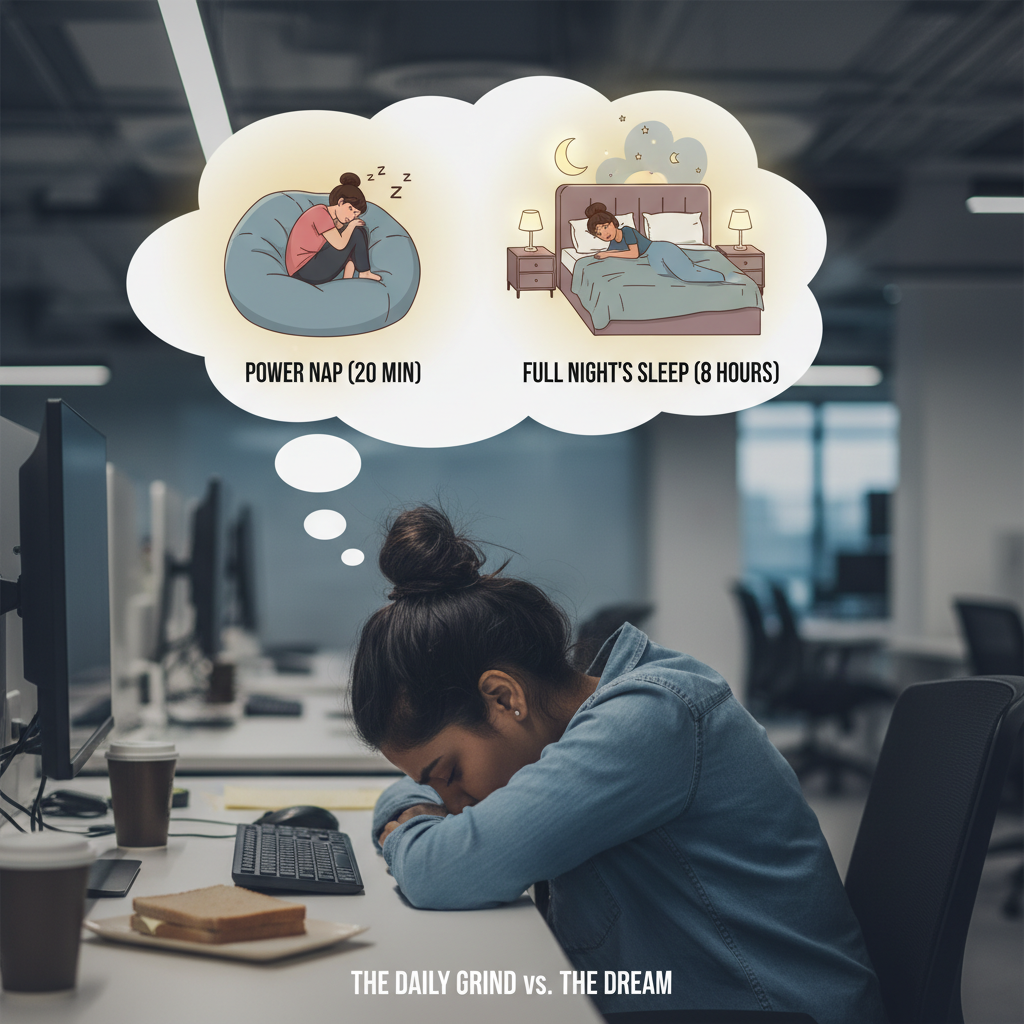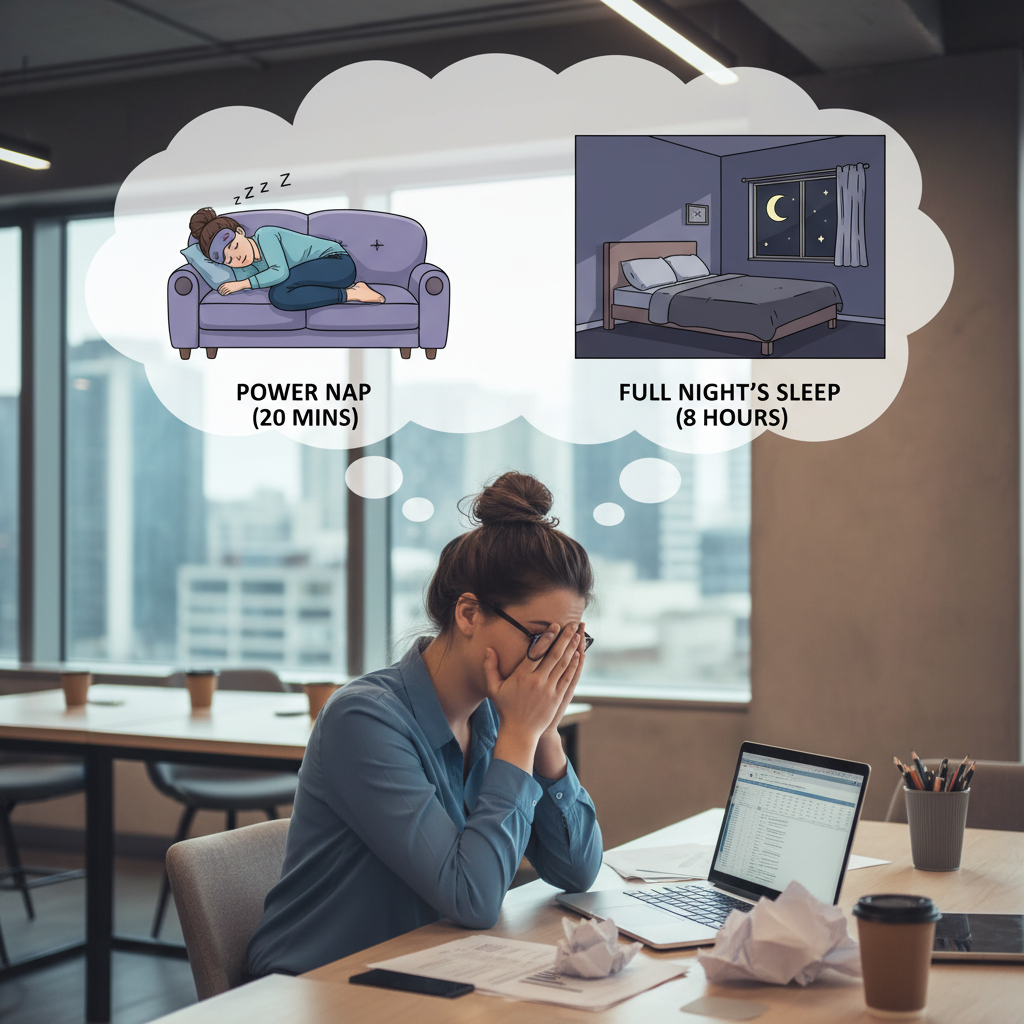Power Naps vs Full Sleep for Wellness

Why I Care About This Topic
Ever felt like juggling life, work, and late-night cravings leaves you desperate for rest? I sure have. Through countless battles with the clock, I found that while power naps help me survive the day’s “zombie at the office” moments, nothing replaces the rejuvenation of a solid night’s sleep. So, let’s delve into the comparison of power naps vs full sleep to discover how to optimize your wellness effectively.

What Are Power Naps?
Power naps are best described as the espresso shots for your brain — quick, intense bursts of rest typically lasting between 10 and 30 minutes. They capitalize on light sleep stages to avoid grogginess and deliver a refreshed mind almost instantly. In fact, NASA’s use of power naps to boost astronaut performance proves just how effective they can be.
Key benefits of power naps include:
- Enhanced mental clarity and alertness
- Improved mood and reduction of daytime fatigue
- Sharper focus and decision-making abilities
- Lowered blood pressure, supporting heart health
- Memory reinforcement before critical tasks
Pro Tip: Schedule your nap between 1 and 3 PM—your brain’s natural slump period—to maximize benefits without disrupting your nighttime sleep.

The Power of Full Sleep
While power naps provide immediate boosts, full sleep — typically 7 to 9 hours — remains the cornerstone of wellness. This complete rest cycles through light, deep, and REM stages, facilitating essential bodily functions like cellular repair, hormone regulation, memory consolidation, and immune system strengthening.
Benefits of full sleep include:
- Microscopic repair of brain and body cells
- Balanced hormones controlling stress and hunger
- Consolidation of memories and emotional stability
- Protection against chronic illnesses
- Physical recovery and mental sharpness for the following day
No matter how many power naps you take, the profound restorative benefits of a full night’s sleep cannot be replaced. Even superheroes need their rest.

Power Naps vs Full Sleep: Key Differences
| Feature | Power Naps (10-30 mins) | Full Sleep (7-9 hours) |
|---|---|---|
| Sleep Stages | Mostly light sleep | Full cycles: light, deep, and REM |
| Purpose | Quick pick-me-up | Deep, lasting restoration |
| Effects Duration | Temporary boost (hours) | Long-term health and wellness |
| Risk of Grogginess | Low if timed well | None, natural waking process |
| Ideal Timing | Early to mid-afternoon (1-3 PM) | Nighttime, consistent schedule |
My Tips for Combining Both for Wellness
- Prioritize nightly 7-9 hours of sleep as a non-negotiable wellness commitment.
- Use power naps strategically during the 3 PM slump for an energy boost.
- Create a peaceful nap environment: cool, dark, and quiet with comfy blankets to ease relaxation.
- Be mindful of nap timing—avoid late naps that could interfere with your full night’s rest.
- Listen to your body’s cues; some days require full sleep, others a quick power nap suffices.
What Readers Say: Case Study
After sharing this insight on social media, the response was overwhelmingly positive. One reader summed it up perfectly: “Power naps are like caffeine without the jitters, but full nights of sleep are where my creativity really wakes up. Can’t live without both!” That truly captures the harmony between power naps and full sleep in sustaining wellness.
Quick FAQ — Power Naps vs Full Sleep
- Can power naps replace a full night of sleep?
-
Simply put: no. Power naps serve as quick energy boosters, but they cannot substitute the comprehensive restorative effects of a full night’s sleep.
- How long should a power nap be?
-
Keep it between 10 and 30 minutes — short enough to avoid sleep inertia but long enough to recharge effectively.
- When is the best time to nap?
-
The ideal window is between 1 and 3 PM, coinciding with your body’s natural dip in alertness.
- Are frequent naps a sign of a problem?
-
Occasional naps are beneficial, but regular long naps may indicate insufficient nighttime sleep or underlying health issues that warrant attention.
Put It Into Practice Without Losing Your Mind
Integrate power naps wisely when energy runs low while honoring the foundational role of full night sleep for long-term wellness. Your mind, body, and perhaps your inner child will thank you.
If you’ve read this far, congrats — you’re officially my favorite! Now, go nap smartly and sleep deeply because that’s where true healing and magic happen.

